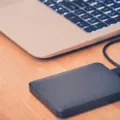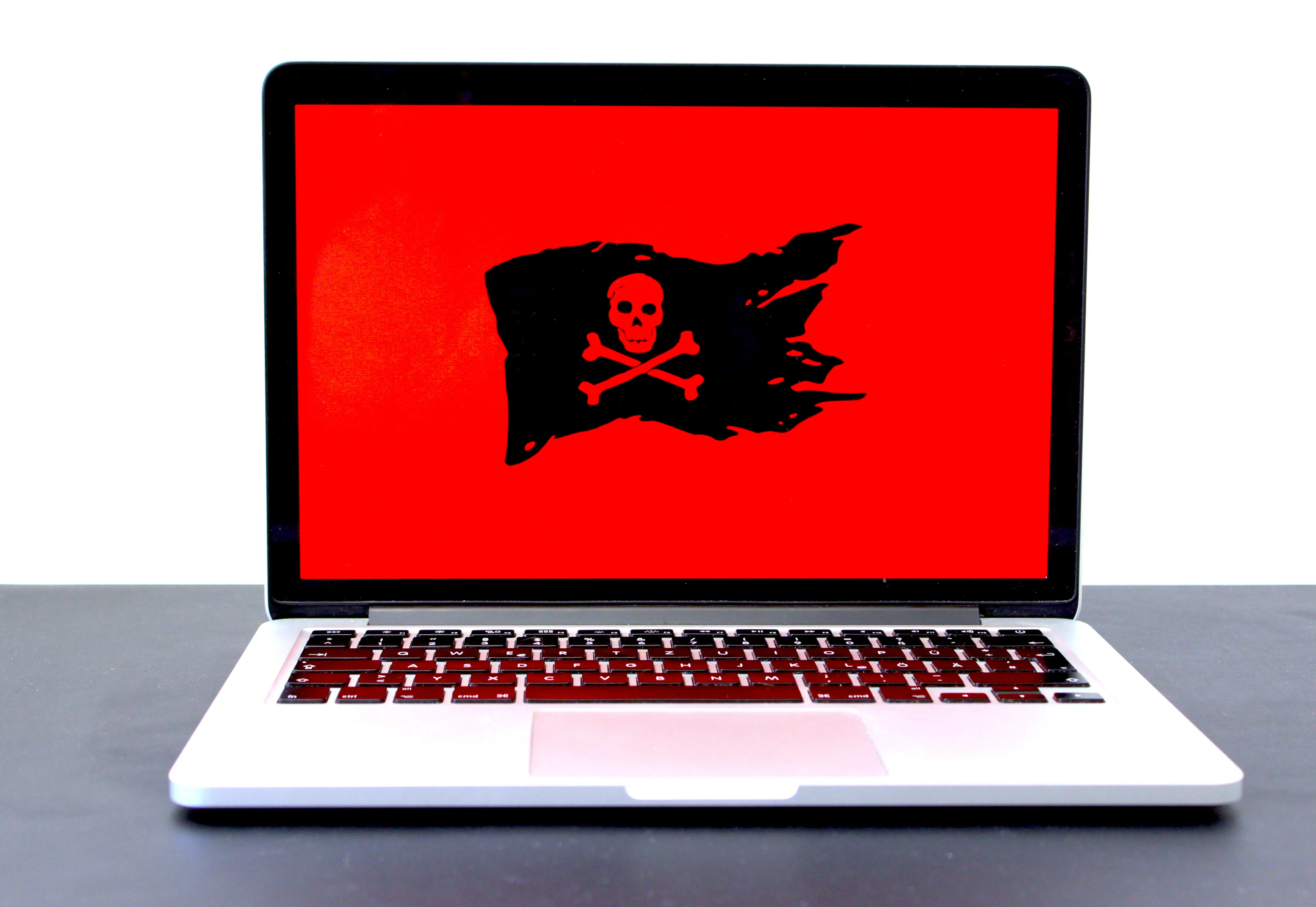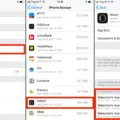One of the most important aspects of owning a smartphone is making sure your data is backed up. If you’re an iPhone 6 user, you’ll want to make sure all your pictures and contacts are safe in case of any unexpected disasters. Backing up your iPhone 6 is a simple process, and with just a few steps, you can have a full backup ready to go.
The first step in backing up your iPhone 6 is to connect it to iTunes on your computer (PC or Mac). To do this, use the USB cable that came with the phone and plug it into both the phone and computer. Once connected, open iTunes on your computer and select the option for “Back Up Now.” This will create a full backup of all the data stored on your device including photos, videos, contacts, notes, messages, calendar entries, and more.
The scond step for backing up your iPhone 6 is to enable iCloud Backup. To do this, go to Settings > iCloud > Backup (on the main Settings page). Toggle the “iCloud Backup” switch so that it reads “On” (green). Once enabled, all data stored on your device will automatically be backed up to iCloud when it is connected to Wi-Fi or plugged into power.
Finally, if you want an extra layer of security in case something happens to either your phone or computer/iTunes library, then make sure you also back up to an external hard drive or cloud storage service like Dropbox or Google Drive. This way if anythig happens to any one source of data storage then you have another copy stored safely elsewhere.
These simple steps can help ensure that all of your important data is saved in case somehing ever happens to your iPhone 6 down the road. It only takes a few minutes each time but can save you a lot of headaches later on!
Backing Up an Entire iPhone
Backing up your entire iPhone is easy! To begin, make sure your device is connected to a Wi-Fi network. Then go to Settings > [your name], and tap iCloud. Select ‘iCloud Backup’, and tap ‘Back Up Now’. Make sure you stay connected to the Wi-Fi network util the process is completed. You can check the date and time of your last backup under ‘Back Up Now’. Keep in mind that this will back up all of your data – including photos, messages, contacts, calendars, and more – so you can access them from any device if you ever need to restore them later on.
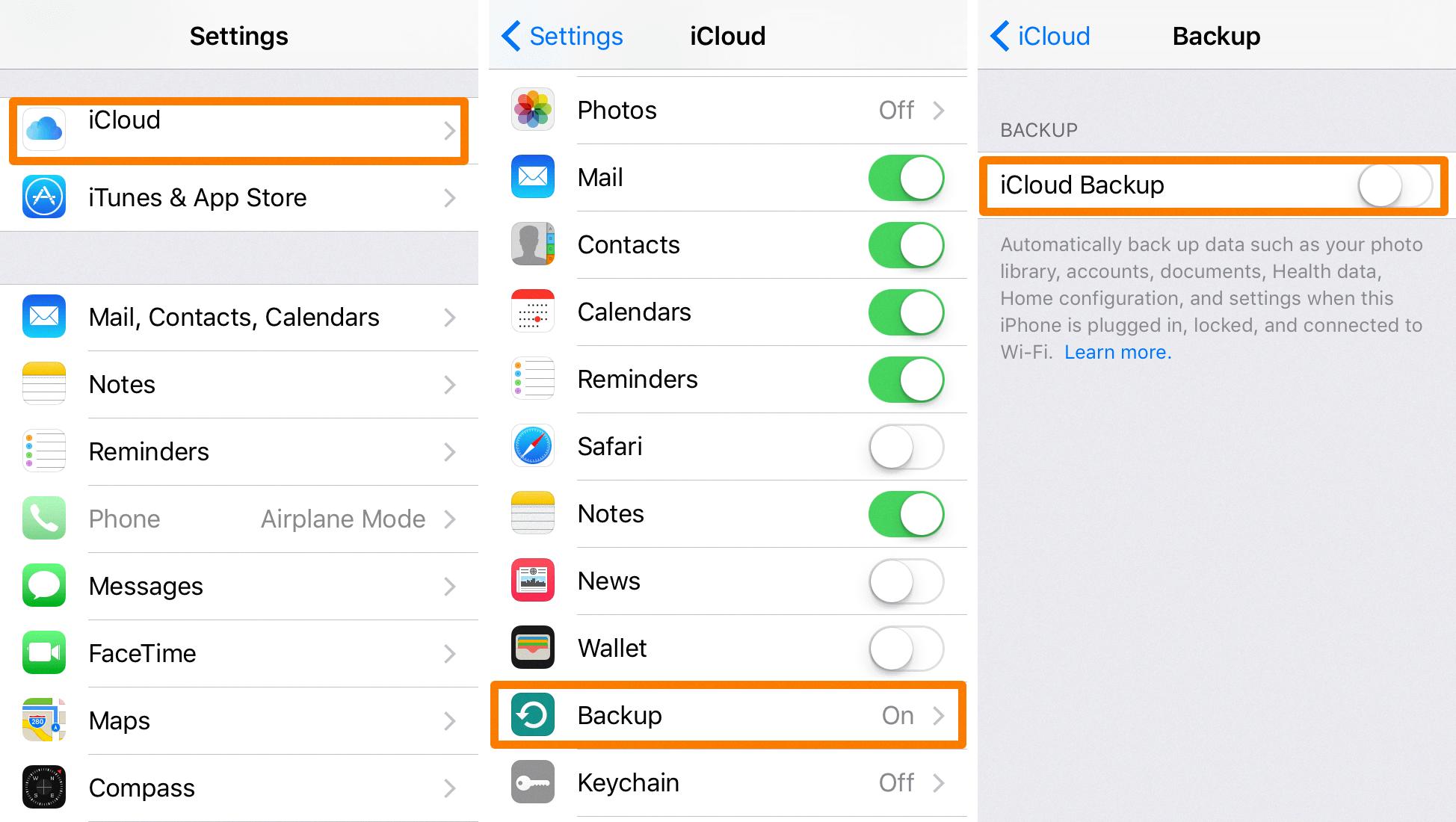
Source: fonedog.com
Backing Up an iPhone 6 to a Computer
To back up your iPhone 6 to your computer, you will need to have the latest version of iTunes installed. Once you have that, connect your device using a USB or USB-C cable or a Wi-Fi connection. Then, open iTunes and click the Device button near the top left of the iTunes window. Click Summary, then click “Back Up Now” below Backups. This will create a backup of your device on your computer. You can use this backup file to restore your device in case of data loss.
Backing Up and Restoring an iPhone 6
Backing up your iPhone 6 is easy and important to do regularly. To back up your iPhone 6, first open the Settings app and select [Your Name] > iCloud > iCloud Backup. Turn on the switch for iCloud Backup, then tap the Back Up Now button that appears. Your phone will begin backing up to iCloud.
When the backup completes, you can check how much of your availale iCloud space was used by going back to the previous screen. To restore from an iCloud backup, go to Settings > General > Reset > Erase All Content and Settings. Then, follow the on-screen instructions to set up your device again and choose Restore from a Backup when prompted. Select the backup you want to use (if you have multiple) and wait as your data is restored from iCloud onto your iPhone 6.
Backing Up an iPhone 6 Without a Computer
Backing up your iPhone 6 wthout a computer is easy and secure. First, make sure your iPhone 6 is connected to a stable Wi-Fi network. Then, go to the Settings app on your device and tap your Apple ID at the top of the screen. Select iCloud and scroll down to iCloud Backup. Toggle it on if it hasn’t already been turned on, and then tap Back Up Now. Your data will be backed up to the iCloud automatically.
Creating a Full iPhone Backup
A full iPhone backup is a comprehensive snapshot of all your device’s data, settings, and app information. This includes contacts, photos and videos, stored messages, call history, notes, calendars, app data (such as game progress), and even wallpaper. A full backup also includes any passwords you’ve savd in Safari or other apps. It is important to note that a full backup does not include content from the iTunes or App Stores or PDFs downloaded directly to Apple Books.
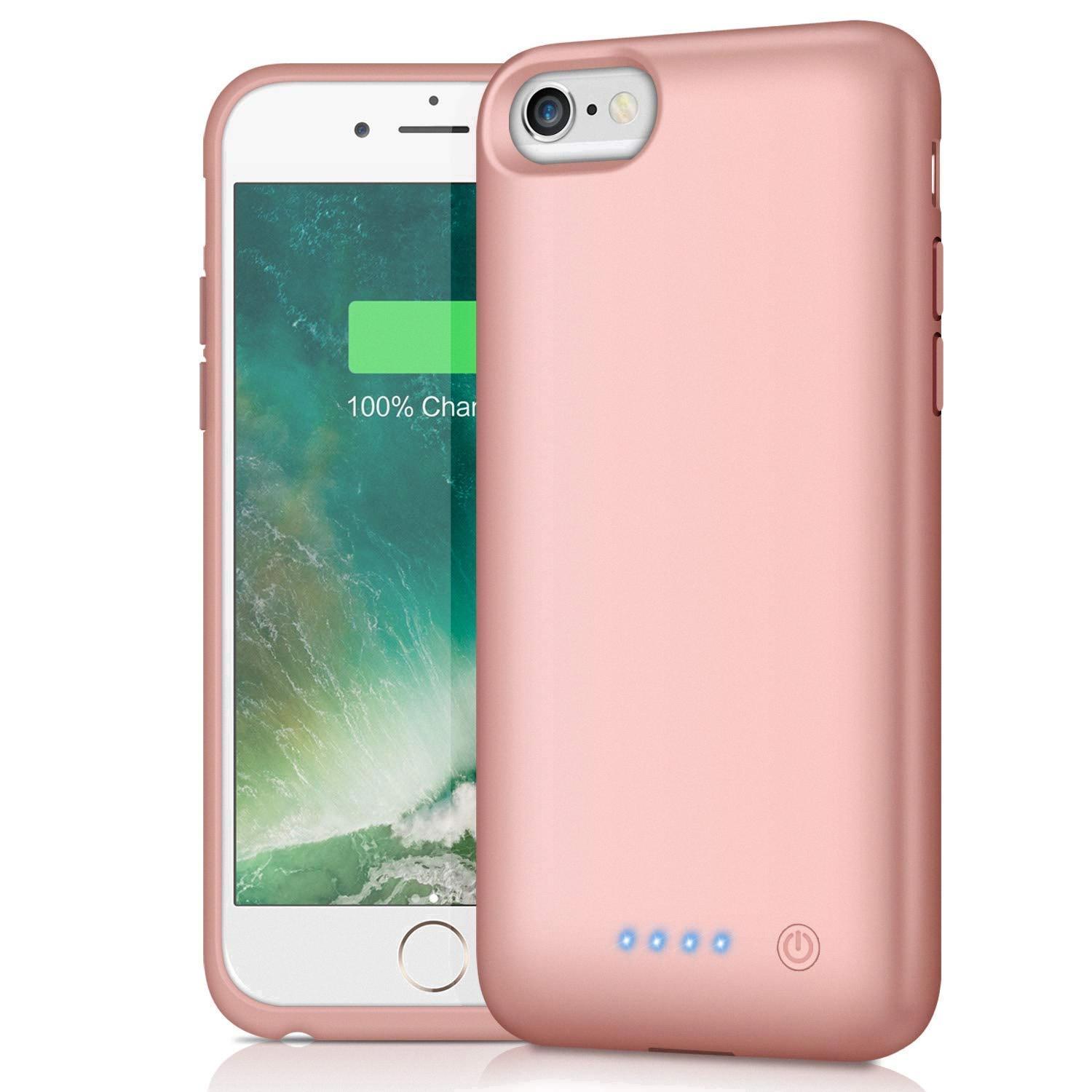
Source: amazon.com
Backing Up an iPhone Before Getting a New One
Yes, it’s very important to back up your iPhone before getting a new one. This way, you can ensure that all your important data, such as contacts, photos, and documents are safe and secure. You can back up your iPhone by using iCloud or iTunes on your computer. When you have a backup, you can easily restore your iPhone from this backup once you’ve logged into your new device with your Apple ID. During the setup process on your new iPhone, you’ll be prompted to use Quick Start wich will help transfer all the data from the old phone to the new one.
Backing Up a Phone to a Computer
Backing up your whole phone to your computer is a great way to ensure that all of your important data is safe and secure. To do this, you’ll need to start by plugging your Android phone into your computer. Then, go to the Settings app, tap General, and then Developer Options. Once there, you should see an option for either USB debugging or Android debugging – select whichever one is available. After that you’ll need to select a USB connection type for file transfer, followed by the “Transfer files” option. Finally, you can go to your Android device in Windows File Explorer and copy the files from your phone onto your PC. That’s it! Just remember that if you’re uing a Mac computer instead of a Windows PC, you may need to use additional software like Android File Transfer in order to complete the backup process.
Transferring Data from an iPhone to a Computer
To transfer everythig from your iPhone to your computer, you’ll first need to connect your iPhone to your computer with a USB cable that supports file transfers. Once the phone is turned on and unlocked, open the Photos app on your PC. Select Import > From a USB device, then follow the instructions given. This will allow you to select items from your iPhone and transfer them over to your computer. Depending on how much content you have on your phone and the speed of your connection, it may take some time for the transfer process to finish. After the transfer is complete, you can disconnect your iPhone from the computer.
Backing Up an iPhone Without iCloud
Backing up your iPhone without iCloud is easy and can be done with the help of iTunes. First, connect your iPhone to the computer and wait for iTunes to launch automatically. Then, unlock your iPhone and trust the computer. In iTunes, click on the “Device” tab, select “Summary” and click on “Back Up Now” to start backing up your iPhone without iCloud. This will create a secure backup of all your data including photos, videos, music, contacts, app data etc. which can be easily restored in case of any data loss or damage.
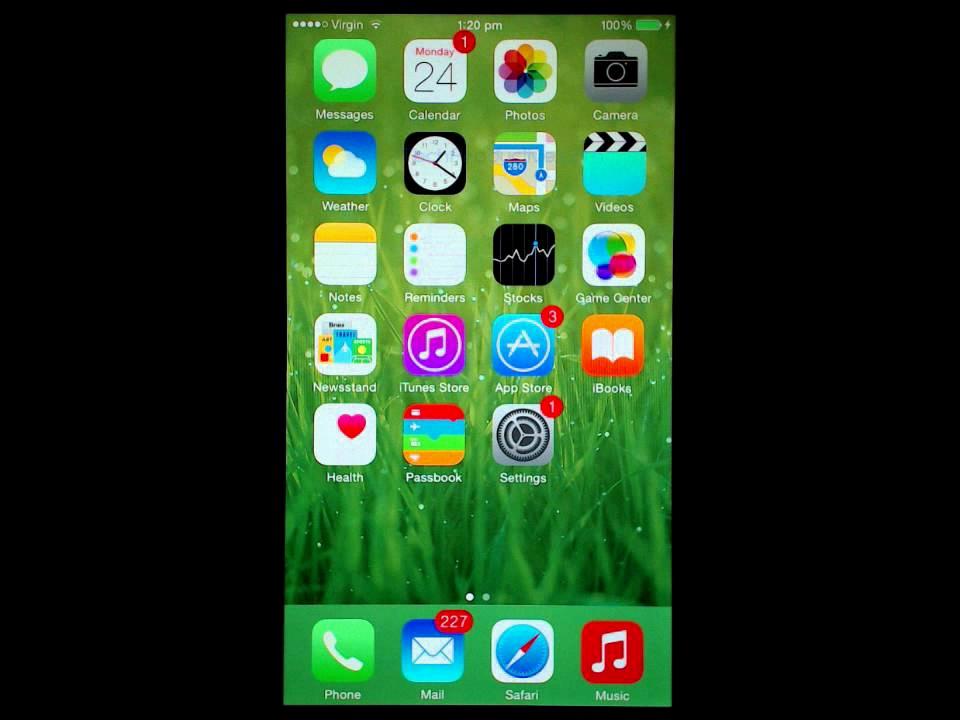
Source: youtube.com
Transferring Data From an Old iPhone to a New iPhone
Transferring everything from your old iPhone to your new iPhone is easy with Apple’s suite of tools.
1. To begin, make sure you have a recent iCloud backup for your old iPhone. If you are not sure, go to Settings > [Your Name] > iCloud > iCloud Backup and turn on iCloud Backup if it isn’t alredy enabled, then tap Back Up Now.
2. Then, on your new iPhone, start the Setup Assistant process by selecting the option to restore from an existing backup. You will be prompted to sign into iCloud with your Apple ID and choose the appropriate backup from the list provided (make sure it is the most recent one).
3. Once you have chosen the correct backup and hit continue, your new iPhone will start restoring all of your settings and data from the old device – including apps and purchased content – in a few minutes.
4. If you have any content that isn’t backed up through iCloud such as music or photos stored in iTunes or Finder on your computer, you can easily transfer them to your new phone via iTunes or Finder sync as well. Simply connect both phones to the same computer (or Mac) and use iTunes or Finder sync to transfer all of your data acoss devices quickly and conveniently!
Unable to Backup iPhone
There are several possible reasons why you may not be able to back up your iPhone. The first is that you may not have enogh iCloud storage available for the entire backup. iCloud backups are stored in the cloud, so if you don’t have enough space allocated for a backup, your iPhone won’t be able to complete it. Another common issue is that your iPhone may be too old to support iCloud backups. If this is the case, try backing up to iTunes on a computer instead. Finally, make sure that you’re connected to Wi-Fi when attempting an iCloud backup – it won’t work over cellular data.
Backing Up an iPhone Without iTunes
Backing up your iPhone withut iTunes is a simple and convenient process. First, connect your iPhone to a Wi-Fi network. Then, open the Settings app and select iCloud. From there, turn on the iCloud Backup option and select Back Up Now. Your phone will now begin to back up its data to iCloud. To check the progress of this backup, go to Settings > iCloud > Storage > Manage Storage. Once the backup is finished, you will have created a secure online storage of your data that can be accessed from any device with an internet connection.
Does an iPhone Backup Include Photos?
No, iPhone backups do not include photos. While iCloud Backup includes information and settings stored on your device, it does not include photos already stored in iCloud such as iCloud Photos, shared photos, or any oter photo library you have stored in the cloud. To ensure your photos are backed up, you will need to store them in an additional service such as iCloud Photos or another cloud-based photo library.
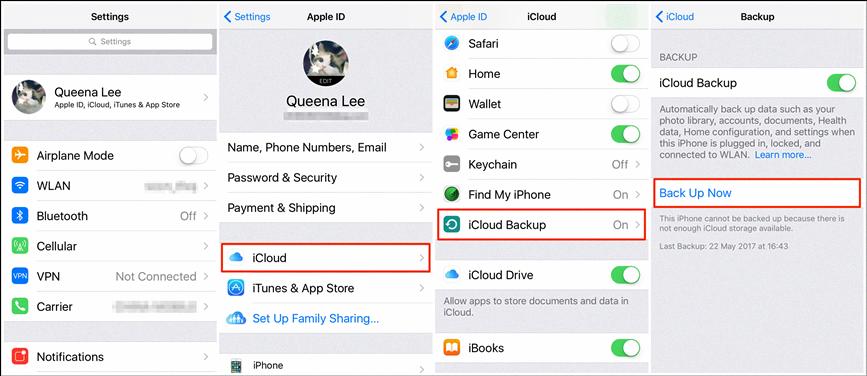
Source: imobie.com
Backing Up an iPhone: How Long Does It Take?
Backing up an iPhone typically takes between 20 minutes to two hours, depending on the amount of data you have, your internet connection, and the model of your phone. If you make regular backups, the process may be quicker. However, it is alays recommended that you keep your phone plugged in and connected to a power source during the backup process.
Backing Up an iPhone: iCloud vs. iTunes
It really depends on your individual needs and preferences. iCloud backups are convenient because they are stored in the cloud and can be accessed from any of your devices. However, this means your data is stored on external servers and is susceptible to potential security threats. Additionally, iCloud backups take longer than iTunes backups because the data has to be uploaded over the internet. On the other hand, iTunes backups are quicker sice they are done locally via cable or Wi-Fi, but you need a physical computer to store them. Ultimately, it’s up to you to decide which backup method best meets your needs.
Does iPhone Backup Save Text Messages?
Yes, iPhone backups save messages. Your text messages are stored in the iPhone backups, whether they are saved locally on your PC or as part of an iCloud backup. The messages do not appear separately within the backup, but you can access them through the filesystem.
Does an iPhone Backup Include Contacts?
Yes, when you back up your iPhone, all of your contacts are included in the backup. Your contacts are stored in iCloud, so they will be included in the iCloud backup. Additionally, if you back up your iPhone to iTunes on your computer, that backup will also include all of your contacts.
Consequences of Not Backing Up an iPhone Before Updating
If you don’t backup your iPhone before updating, you risk losing important data such as texts, photos, and contacts. When you update your iPhone’s software, it completely erases all the data and settings that were previously stored on it. Therefore, if you don’t back up your device before updating, all of your data will be gone and you won’t be able to recover it. To avoid losing important content from your device, make sure to always back up your iPhone before making any updates.
Transferring Data to a New Phone
To transfer everyhing from your old phone to your new phone, you can use a data transfer cable or Wi-Fi.
If you choose to use a data transfer cable, simply connect the two phones with the cable to begin transferring. The process is usually simple and straightforward, and will move all your data from your old phone to the new one.
If you choose to use Wi-Fi, you will need to download an app for both phones that alows for wireless transfers of data. Once the app is downloaded on both devices, follow the instructions provided in the app to complete the transfer process. This method is more time consuming than using a data transfer cable, but can also be used if a cable is not available.
Whichever method you choose, make sure that all of your contacts, texts, photos and videos have been transferred before disconnecting either device.
Consequences of Updating an iPhone Without Backing It Up
If you update your iPhone without backing it up, any data that has been changed since the last backup will be lost. This includes contacts, photos, messages, apps, music and othr files you have stored on the device. It’s important to back up your iPhone regularly so that you don’t lose any important data when updating.
Transferring Data From Phone to Laptop
To transfer data from your phone to your laptop, you will need to use a USB cable to connect your device. On your phone, tap the “Charging this device via USB” notification, then select File Transfer undr “Use USB for”. An Android File Transfer window will open on your computer. You can then drag and drop files from one device to the other. It’s important to remember to safely eject the device when you’re done transferring files in order to avoid any data corruption or loss.
Backing Up Phone Data Before Factory Reset
Before performing a factory reset on your phone, it is important to backup your data so that you can restore it ater the reset. To do this, start by signing into your Samsung account. On the next screen, you will be presented with a list of apps and services that you can choose to include in the backup. Make sure to enable any that you want to back up and turn on the Auto Backup switch if it is available. Once all of your desired settings are enabled, tap on the ‘Backup Now’ command to initiate the backup process. After this is complete, your data will be securely stored in your Samsung account and will be ready for restoring after your factory reset.
Backing Up Contacts
To ensure that your contacts are always backed up and in sync, you can use the “Automatically back up & sync device contacts” feature on your Android phone or tablet. First, open the “Settings” app and tap Google. Then, go to Settings for Google apps and turn on Automatically back up & sync device contacts. Finally, pick the account you’d like your contacts to be saved in – they can only be automatically saved to one Google Account. By following these steps, you can easily back up all of your contacts!
Downloading All Information From an iPhone
To download all information from your iPhone, you need to use Apple’s Data and Privacy feature. First, sign in to your Apple ID account page at appleid.apple.com on a Mac, iPhone, iPad or PC. Then, go to “Data & Privacy” and select “Manage Your Data and Privacy.” On the folowing page, go to “Get a copy of your data” and select “Get started.”
You will then be taken to the Data and Privacy page where you can select the type of data (photos, documents, contacts, etc.) that you want to download from your iPhone. Once you have selected the types of data that you want to download, click “Continue” and follow the instructions provided by Apple. Depending on the amount of information that needs to be downloaded, it may take several hours or days for the download process to complete.
Consequences of Not Backing Up an iPhone to iCloud
If you don’t backup your iPhone to iCloud, you risk losing important data if something happens to your device. Any photos, videos or contacts that are saved on your device but not backed up to iCloud will be lost forever. Additionally, any apps, music or settings changes you have made since the last backup will also be gone. Backing up to iCloud allows you to restore your data and settings in the event of an issue with your iPhone and is essential for keeping your device safe and secure.
Where to Find IPhone Backups
Your iPhone backups are stored in iCloud. To access them, go to Settings > [your name] > iCloud. Tap Manage Storage, then tap Backups. Here you’ll be able to view information about your backups and delete them if needed. You can also choose which information to back up by tapping on the backup you’d like to modify.
Transferring Data to a New iPhone Without a SIM Card
No, you do not need to put the old SIM card into the new iPhone before transferring data. You can transfer your data over a Wi-Fi network without needing the old SIM card installed. However, if you want to use the Messages and FaceTime apps that are linked to your phone number, then you will eventually need to install the old SIM card in the new iPhone.
Estimating Storage Requirements for Backing Up an iPhone
It depends on how much data you have stored on your iPhone. It’s best to err on the side of caution and have more storage than you need.
If you have an iPhone with 32GB or less storage, then you will need at least 5GB of iCloud storage for a full backup. This is because Apple’s iCloud Backup has a 5GB limit for free users, and it is shared across all devices using your Apple ID.
If you have an iPhone with 64GB or more storage, then depending on how much data you are storing on your device, 10-15GB of iCloud storage should be enough. If you are backing up photos and videos (which can take up a lot of space) then it is recommended that you upgrade to 50GB of iCloud storage which will give you plnty of extra space to back up your device without worrying about running out.
Overall, it is important to remember that Apple’s iCloud Backup has a 5GB limit for free users, so if you plan to backup multiple iOS devices using the same Apple ID then it may be worth considering investing in additional iCloud storage.
Backing Up Photos From an iPhone: Where Do They Go?
When you backup an iOS device to iTunes, the photos in the Camera Roll album are included in the backup and stored in a specific location on your computer. Depending on your computer’s platform (Windows or Mac), this location can vary.
On Windows computers, these backups are located in one of two places:
• If you’re usng Windows 10, all iOS backups are stored in \Users\[USERNAME]\AppData\Roaming\Apple Computer\MobileSync\Backup\.
• If you’re using an older version of Windows, such as 7, 8, or 8.1, then all iOS backups are located in \Users\[USERNAME]\AppData\Roaming\Apple Computer\MobileSync\.
On Macs, these backups are located at ~/Library/Application Support/MobileSync/Backup/.
It is important to note that if you use iCloud to store your photos istead of backing up to iTunes, then none of your photos will be included in the iTunes backup.
Verifying If iPhone Pictures Are Backed Up
To verify that your iPhone pictures are backed up, you can check your iCloud Backup. To do this, open the Settings app on your iPhone and tap on the Apple ID banner at the top. Scroll down and select iCloud. From there, select iCloud Backup and view the latest backup that was taken. If it was a few days ago or longer, you will have the option to tap on “Backup Now” to start a new backup immediately. It is important to regularly back up your photos to ensure they are safe and secure.
Checking If an iPhone Is Backed Up to iCloud
You can easily check if your iPhone is backed up to iCloud by going to Settings > [your name] > iCloud > Manage Storage. Here, you’ll see a list of all the devices that have iCloud Backup turned on. If your iPhone is listed here, then it is backed up to iCloud.
Backing Up an iPhone: The Fastest Way
The fastest way to backup your iPhone is to use iCloud. To enable this, go to Settings > [your name] > iCloud > iCloud Backup and turn on the iCloud Backup feature. Once enabled, your iPhone will be automatically backed up daily when it is connected to power, locked, and connected to Wi-Fi. You can also perform a manual back up at any time by tapping Back Up Now.
Transferring Data From Old iPhone to New iPhone
The process of transferring data from an old iPhone to a new one typically takes between 30-45 minutes. The first step is to activate the new iPhone by connecting it to wifi and signing into your Apple ID. After that, you can use the QuickStart feature on both iPhones to transfer your data. This will include your contacts, photos, text messages, and othr content stored on the old device. Finally, you may need to sign in again on some apps that require authentication. All in all, this process should take around 30-45 minutes depending on how much data needs to be transferred.
Using a Phone While It Is Backing Up
No, you cannot use your phone while it is backing up with iCloud. iCloud Backup runs automatically whenever your iPhone is connected to a Wi-Fi network, plugged into power, and locked. During this time, you won’t be able to access any of the content on your device or make any changes until the backup has completed.
Conclusion
Backing up your iPhone 6 is an important part of protecting your data and making sure it is secure. It is recommended that you back up your iPhone 6 at least once a week using eithr iCloud or iTunes. To back up using iCloud, connect your iPhone to a Wi-Fi network, go to Settings > iCloud > Backup and turn on iCloud Backup, then tap Back Up Now. To back up with iTunes, connect your iPhone to a computer with iTunes installed, open iTunes and select the device icon. Select Summary and then select Back Up Now. Both methods will keep all of your data safe in the event of a system crash or hardware malfunction, so make sure you back up regularly!

